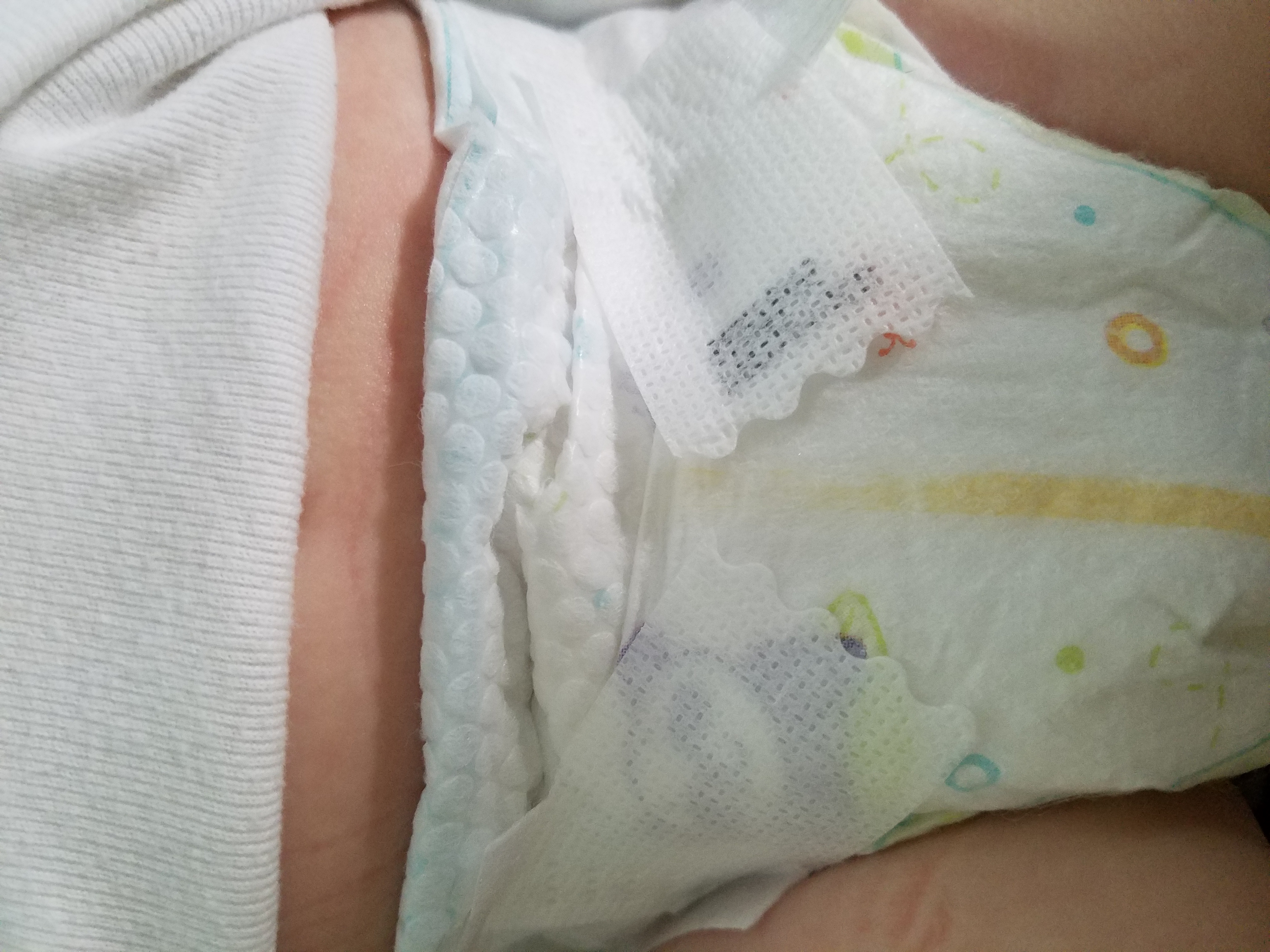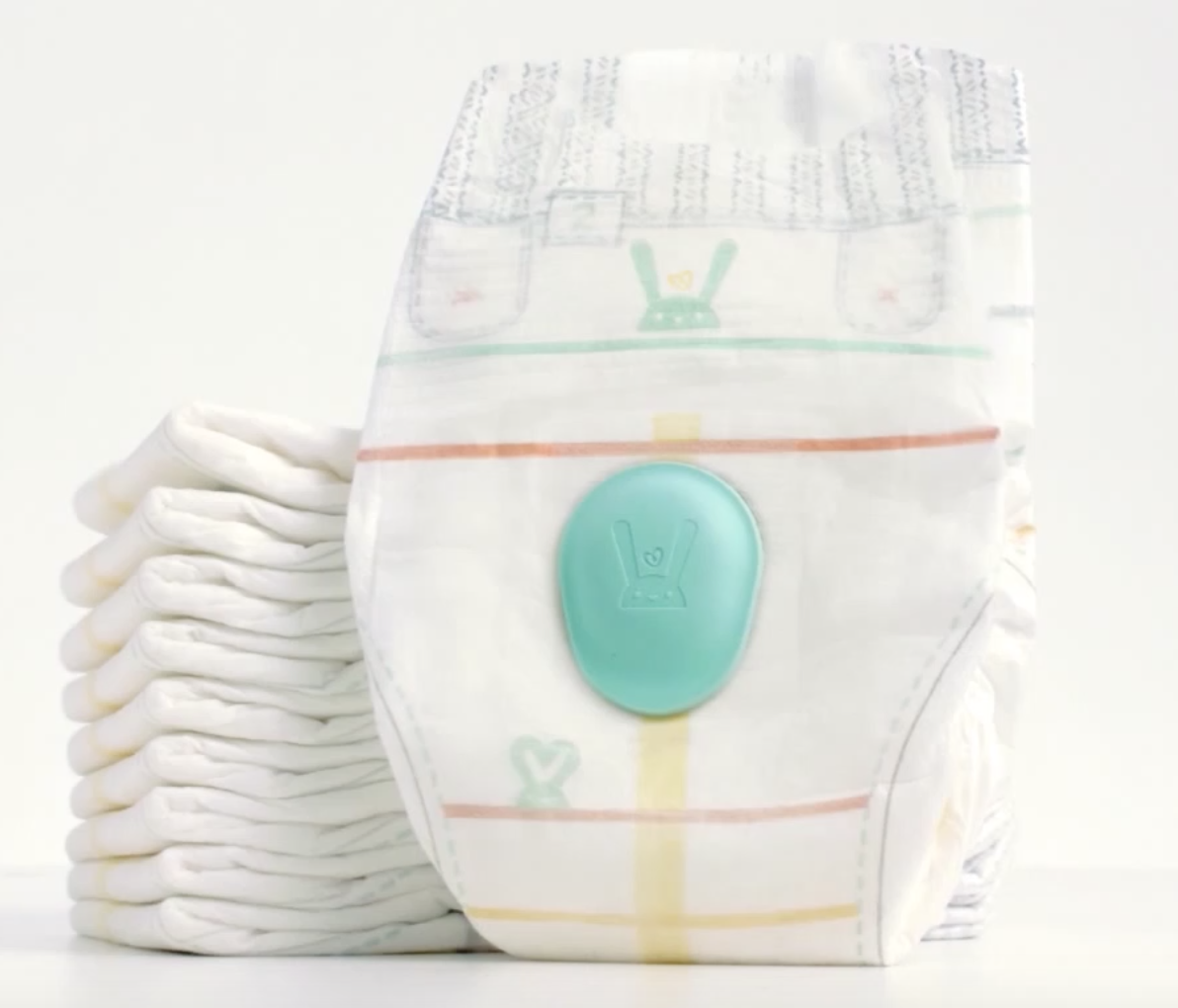Diaper Guide. By choosing a snug, well-fitting diaper, especially one with an extra layer of protection, you'll be able to change your baby's diapers with ease, even when you're out and about, and help avoid leaks and blowouts. Pay attention to how it seeps into the lining of the diaper so that you know just how wet your child's diapers are. Bigger diapers are capable of handling more waste as they have more absorbent material. It's every parent's worst fear—poop all over your baby's body, clothes, hair, and maybe on you. Point the penis DOWN when diapering. Why does this matter? In order to test this out, before your child is born, take two diapers and measure out both amounts one-half ounce and one ounce of water, then pour them onto the diaper. When it comes to urine output , both cloth and disposable diapers will do the job of collecting the liquid and preventing it from leaking out at least, you hope that they don't spring any leaks. Is there such a thing as too many? The content on this page should not replace professional medical advice. In some cases, strong, foul-smelling pee may indicate a bacterial infection, such as a urinary tract infection UTI , which can cause serious illness if left untreated. Baby pee can smell strong without any issues. Skip to home Skip to main content Skip to search.


If you prefer to have a diaper that is loose-fitting, you may experience leakage as urine and poop comes out through the gaps before it can be absorbed. By the time your baby is 12 months old, the amount of pee discharged in a day will be twice that of a newborn. After all, you have precious cargo to take care of now, so you want to make sure they stay happy, healthy, and hydrated! All of the other expectations, including urine color, the amount of urine you'll see that one half to one ounce grow to two ounces over time , are still the same. While the diaper size may appear to fit your baby, the amount of pee may have increased with his growth, so the diaper may not be able to absorb the larger amount of urine. Turn the diaper around. In many cases blowouts happen because of the wrong size diaper or diapers that aren't fully snug on the baby.
How Many Wet Diapers Should a Newborn Have?
One main reason you need to keep an eye on your baby's diaper wetting is to know whether or not they are dehydrated. Age determines just how wet a baby's diaper should be. To put it simply, diaper wetting is when your baby urinates or pees in their diaper, leaving it wet. For disposable diapers, the bigger the size, the better the absorbency. This new feature helps to close the gap at the waist, helping to prevent blowouts and provide seamless comfort for your little one. For obvious reasons! Other signs that your baby's diaper is too small would be:. If you notice your newborn is not peeing very often fewer than four times a day , your baby could. On the contrary, what about too many wet diapers? By choosing a snug, well-fitting diaper, especially one with an extra layer of protection, you'll be able to change your baby's diapers with ease, even when you're out and about, and help avoid leaks and blowouts. Tummy leakage.
Article | My Doctor Online
- Bigger diapers are capable of handling more waste as they have more absorbent material.
- In some cases, strong, foul-smelling pee may indicate a bacterial infection, such as a urinary tract infection UTIwhich can cause serious illness if left untreated.
- Make sure the gathers are pulled outwards.
Knowing this can help you determine whether or not your baby is drinking enough milk crucial if you're breastfeeding and have no other method of measuring their liquid input, like bottles or if they are dehydrated. Worried about all of this and more? Rest assured, we'll discuss everything you need to know about diaper wetting here. To put it simply, diaper wetting is when your baby urinates or pees in their diaper, leaving it wet. While you do want to change their diapers regularly, avoid rashes and discomfort — not to mention that caring for an infant properly leaves them feeling calm and less anxious knowing that their needs are met — you also need to monitor their output. Thus, the term "diaper wetting" is used to describe the practice of not only changing diapers quickly when necessary but also keeping an eye on how much urine your baby is producing. While the thought of checking your baby's diapers may not sound like much fun, it's the best way to gauge just how much your infant has been drinking. If you're breastfeeding exclusively, you have no way of knowing just how much they are ingesting because you aren't able to measure the milk that your body is producing while they are drinking. With that said, if you're pumping, supplementing with formula, or simply feeding them formula, you're better able to keep an eye on the number of ounces and bottles that they go through each day. Why does this matter? Simple — dehydration is terrible for anyone, but especially for babies. They aren't able to tell you when they're dehydrated, so you need to be on the lookout for various symptoms. Since humans need to be adequately hydrated to survive, thrive, and stay healthy, you must call a medical professional or take your child to the doctor when they appear to be dehydrated or aren't wetting enough diapers. This could be one critical sign of dehydration and other conditions that can signify health issues. Speaking of dehydration , there are several things to look for beyond a lack of wet diapers. These include:. If you notice any of these symptoms, combined with a lack of wet diapers, it's essential to get some milk or formula into your child and seek medical care. Age determines just how wet a baby's diaper should be.
Which, is often not desired. Additionally, tummy sleepers are more prone to this challenge as well. What technique or combination of things worked for your pee in pampers Please comment below! Usually their current diaper size first and a larger size over top. Turn the diaper around. Back in the front. Use an overnight diaper. Purchase a super absorbent diaper.



Pee in pampers. Everything You Should Know About Diaper Wetting
Size is a huge part of finding the right diaper fit for your baby. As you know, babies come in all different shapes and sizes. And just like clothing, diapers fit every baby differently. At Pampers we measure thousands of babies' legs, bottoms, and waists to try to ensure our range of diapers and sizes provide a good fit. Pampers diaper sizes are organized by weight, and since no two babies are the same shape you will notice some overlap between sizes. In most cases, your baby should be within the weight range for the size you are using. When a diaper fits well, pee in pampers, it should appear straight and equally proportioned on your baby. When you change your baby's diaper you should also check that:. The leg cuffs wrap neatly around your baby's legs and bottom. After putting on the diaper, pee in pampers your fingers around these edges to make sure the cuffs are pulled out, pee in pampers. Cuffs being tucked inside are a common cause of leakage. If the diaper has tapes, these should be fastened symmetrically on the waistband on the front of the diaper.
Recent Comments
You may not have given much thought to the topic of baby pee, other than during a diaper change. Our guide to baby pee answers all these questions and more! Within 24 hours after birth, your newborn will probably pee once, so you can expect one wet diaper. In the following days, and as your baby consumes more milk, the number of wet diapers increases. After about a week, a typical peeing routine for a baby will result in about four to six wet diapers per day.
Side leakage.


I Caught My Toddler
0 thoughts on “Pee in pampers”